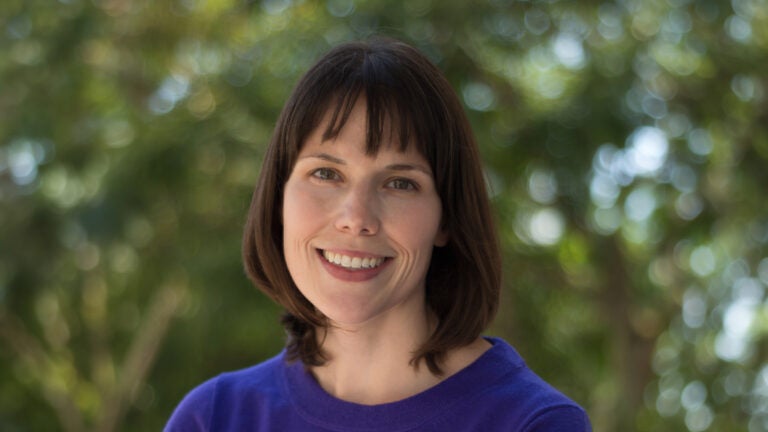
Ann Owens is a professor of sociology at the USC Dornsife College of Letters, Arts and Sciences. (Photo/Peter Zhaoyu Zhou)
Q&A with Ann Owens: Why California struggles with affordable housing
Owens, an expert in social inequality, explains how California’s affordable housing crisis unfolded and the ways the state could fix it.
The recent U.S. Supreme Court case City of Grants Pass v. Johnson has reignited national discussions on homelessness. California, with a growing unsheltered population, faces intense scrutiny over its approach to affordable housing. A chronic housing shortage, coupled with surging rents and stagnant wages, threatens the dream of homeownership for many and pushes others toward homelessness.
USC News spoke with Ann Owens, professor of sociology at the USC Dornsife College of Letters, Arts and Sciences, to better understand the root causes of California’s affordable housing crisis.
What are the biggest challenges facing our current housing system, and how do they affect broader social issues, particularly in Los Angeles?
Owens: The more I study housing and the more I observe what’s going on in Los Angeles, I am convinced that housing is the key to so many inequalities in our society. Housing is intertwined with so many of our public systems — when our housing system is broken, our health care, public transportation, public education, social safety net programs and justice systems are overburdened, perpetuating the challenges that unhoused people face. Housing systems reflect preexisting economic, gender and racial inequalities in terms of who struggles to afford shelter, can access shelter, who is seen as deserving of shelter, who is holding or protecting assets and wealth. We need to massively increase housing production, we need to increase eviction protection, we need to expand our subsidized housing programs. We need to prioritize housing because in the long run, this will benefit society as a whole and reduce persistent inequalities.
Why is it so difficult to build affordable housing in California?
Owens: Building anything in California is expensive. We just haven’t built enough for many decades now, and this limited supply has raised housing costs — so now building any unit of housing is expensive. The U.S. no longer builds public housing, instead providing subsidies on the private market through either housing vouchers or through rent-restricted housing built by private developers, like the Low-Income Housing Tax Credit (LIHTC) program.
Either way, the private market is producing affordable units, so affordable housing is subject to the same land and construction costs as any private market builder. Other challenges are zoning and local support, but the affordable housing developers I’ve spoken with often have surmounted these challenges to assemble projects and have more projects than they can currently fund due to high costs.
What are some of the biggest obstacles facing individuals and families trying to access public housing programs, Section 8 vouchers or other forms of affordable housing assistance?
Owens: Individuals and families trying to access subsidized housing face challenges of limited supply and challenges navigating the housing market. Only about a quarter of families eligible for federal housing assistance due to their low incomes actually receive it because we choose to not fund housing vouchers and other programs at a level to meet all needs.
Most low-income renters survive without any federal housing assistance. Those that can access the system face complicated application and eligibility systems. Those renting with a housing voucher or in a LIHTC building often face discrimination in tenant screening, like non-subsidized private renters do, though often discrimination is amplified for voucher holders. Those who don’t have rental assistance often cut back on food and other necessities in order to afford rent.
What are some of the most promising trends or innovations you see in public housing, Section 8 or other affordable housing models that could create more sustainable and supportive solutions in the future?
Owens: One of the most promising trends I see is increased attention to housing. It is now the biggest issue in the state (and in many other states). California has passed dozens and dozens of laws intending to streamline the production of affordable housing, and local jurisdictions like Los Angeles are focused on addressing this issue as well. But we’ve gotten ourselves into a hole by building very little over the past several decades, and it’s hard to undo all that damage in a short time frame.
Specific innovations that seem helpful in the Section 8 program include master leasing buildings — that is, housing authorities allocating voucher funding to lease all the units in a given building for low-income tenants, which mitigates the challenges voucher recipients face in finding units for which to use their voucher — and experimenting with converting vouchers to cash subsidies — giving tenants guaranteed income each month to use to meet their expenses, forgoing the complexities of the voucher lease-up process. Discussions around new social housing models also are interesting, if currently vague on details. California Assemblymember Alex Lee has introduced a social housing bill, AB 2881, that would create publicly owned, affordable mixed-income housing.



